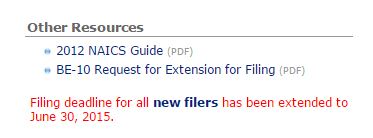![Harry S. Truman Building, United States Department of State, Washington, D.C. by Ken Lund [CC-BY-SA-2.0 (http://creativecommons.org/licenses/by-sa/2.0)], via Flickr https://www.flickr.com/photos/kenlund/14299552757/ Harry S. Truman Building, United States Department of State, Washington, D.C. by Ken Lund [CC-BY-SA-2.0 (http://creativecommons.org/licenses/by-sa/2.0)], via Flickr https://www.flickr.com/photos/kenlund/14299552757/](https://www.exportlawblog.com/images/truman_building.jpg) DDTC issued proposed rules yesterday dealing, mostly, with the conundrum of what to do with U.S. citizens who work, either in the U.S. or abroad, for foreign defense contractors. Since most normal people (viz., natural persons) do not pore over the ITAR in their spare time, it often comes as a surprise to them, particularly if they are working for foreign defense contractors who don’t care much about the ITAR, that they can go to jail for undertaking such employment in certain circumstances, unless they register with, and get advance permission from, the State Department’s Directorate of Defense Trade Controls.
DDTC issued proposed rules yesterday dealing, mostly, with the conundrum of what to do with U.S. citizens who work, either in the U.S. or abroad, for foreign defense contractors. Since most normal people (viz., natural persons) do not pore over the ITAR in their spare time, it often comes as a surprise to them, particularly if they are working for foreign defense contractors who don’t care much about the ITAR, that they can go to jail for undertaking such employment in certain circumstances, unless they register with, and get advance permission from, the State Department’s Directorate of Defense Trade Controls.
The proposed rules ease up on this restriction, at least for U.S. citizens who work for foreign defense contractors in a “NATO or EU country, Australia, Japan, New Zealand, and/or Switzerland.” The end-users for the defense articles involved must be in one of those countries, and no U.S. defense articles can be involved. Oh, and no SME either, meaning the foreign defense article cannot be defined on the United States Munitions List as “Significant Military Equipment,” which includes not just obvious things like bombers and missiles but also less obvious things like certain lasers.
Before you run off and email your job application to BAE, there’s one more thing. Although U.S. persons in such situations do not need prior DDTC approval for such employment, they still need to register with DDTC. There is an exemption for people working for DDTC-registered companies but, obviously, this may not be the case for the scenario of a U.S. person working for a foreign defense company.
Two additional things should be pointed out about the proposed rules: one is useful and the other is, frankly, rather hilarious. Let’s take the useful one first. As most readers will know, there has been a bewildering lack of clarity about which subsidiaries can be included on a registration statement, particularly inasmuch as section 122.2 allowed such inclusion for subsidiaries that were more than 50 percent owned by the registrant or were “otherwise controlled.” It’s always those “otherwises” that keep lawyers employed. The proposed rules add a note to say that “otherwise controlled” can be
rebuttably presumed to exist where there is ownership of 25 percent or more of the outstanding voting securities if no other person controls an equal or larger percentage.
Now for the somewhat hilarious one. In order to allow U.S. citizens to work for foreign defense contractors, but not to create a new exemption for U.S. companies in their dealings with these foreign companies, DDTC has decided that it needed to say that this exemption is restricted to “natural persons.” And, because “natural person” seemed to them apparently to be an incomprehensible and esoteric term, the new rules actually define natural person. It means, in case you were wondering, an “individual human being.” Of course, “human being” probably needs to be defined as well. Â I, for one, Â know plenty of people who are not really “human beings.” Â For example, New York Yankees fans aren’t human beings. They’re animals, pure and simple.
![Brian Moyer via http://www.bea.gov/about/images/moyer-brian.png [Public Domain] Brian Moyer via http://www.bea.gov/about/images/moyer-brian.png [Public Domain]](https://www.exportlawblog.com/images/moyer-brian.jpg)

 Posted by
Posted by  Category:
Category: 


![Harry S. Truman Building, United States Department of State, Washington, D.C. by Ken Lund [CC-BY-SA-2.0 (http://creativecommons.org/licenses/by-sa/2.0)], via Flickr https://www.flickr.com/photos/kenlund/14299552757/ Harry S. Truman Building, United States Department of State, Washington, D.C. by Ken Lund [CC-BY-SA-2.0 (http://creativecommons.org/licenses/by-sa/2.0)], via Flickr https://www.flickr.com/photos/kenlund/14299552757/](https://www.exportlawblog.com/images/truman_building.jpg) DDTC issued
DDTC issued ![Photo: Harland Quarrington/MOD [see page for license], via Wikimedia Commons http://commons.wikimedia.org/wiki/File%3ACyber_Security_at_the_Ministry_of_Defence_MOD_45153616.jpg Photo: Harland Quarrington/MOD [see page for license], via Wikimedia Commons http://commons.wikimedia.org/wiki/File%3ACyber_Security_at_the_Min istry_of_Defence_MOD_45153616.jpg](https://www.exportlawblog.com/images/cybersecurity.jpg) At long last, and well after the E.U. and many other members of the Wassenaar Arrangement, BIS has
At long last, and well after the E.U. and many other members of the Wassenaar Arrangement, BIS has ![By Daderot (Own work) [CC0], via Wikimedia Commons http://commons.wikimedia.org/wiki/File%3APatent_quote_-_United_States_Department_of_Commerce_-_DSC05103.JPG By Daderot (Own work) [CC0], via Wikimedia Commons http://commons.wikimedia.org/wiki/File%3APatent_quote_-_United_States_Department_of_Commerce_-_DSC05103.JPG](https://www.exportlawblog.com/images/Commerce_Building.jpg) The Bureau of Industry and Security (“BIS”) just released new guidance, snappily titled “
The Bureau of Industry and Security (“BIS”) just released new guidance, snappily titled “![Los Angeles International Airport by Daniel Betts [CC-BY-SA-2.0 (http://creativecommons.org/licenses/by-sa/2.0)], via Flickr https://www.flickr.com/photos/redlegsfan21/13789084574 Los Angeles International Airport by Daniel Betts [CC-BY-SA-2.0 (http://creativecommons.org/licenses/by-sa/2.0)], via Flickr https://www.flickr.com/photos/redlegsfan21/13789084574](https://www.exportlawblog.com/images/lax.jpg) A federal district court judge in the District of Columbia last week
A federal district court judge in the District of Columbia last week 

